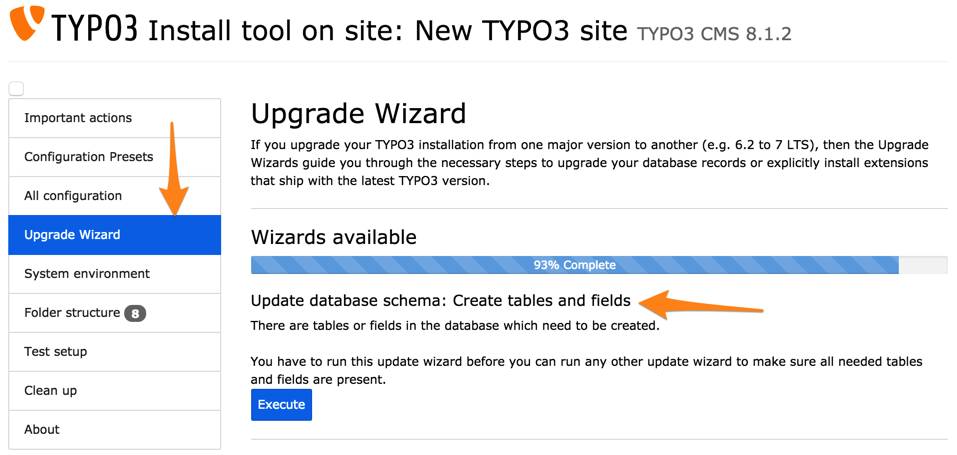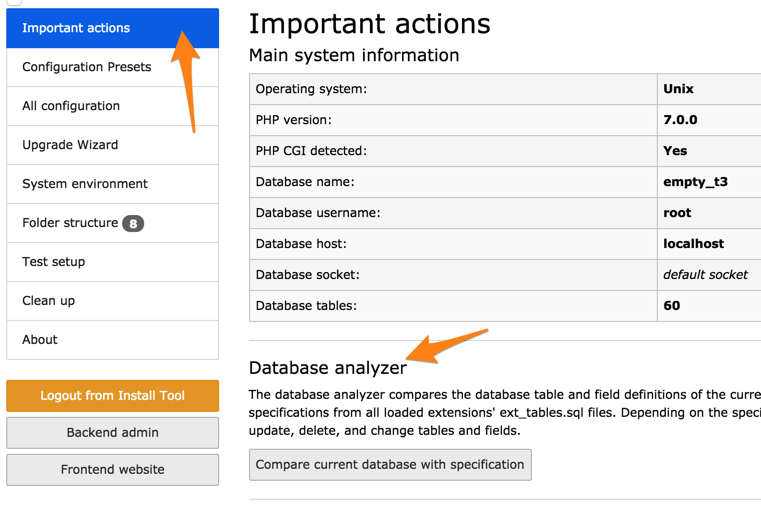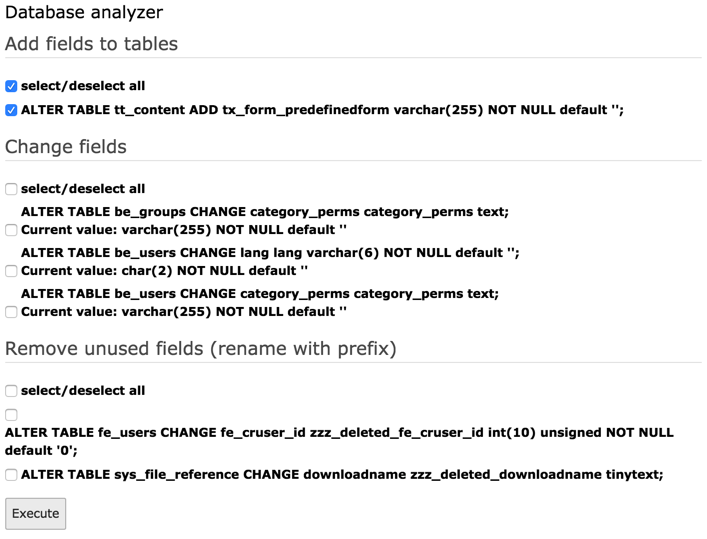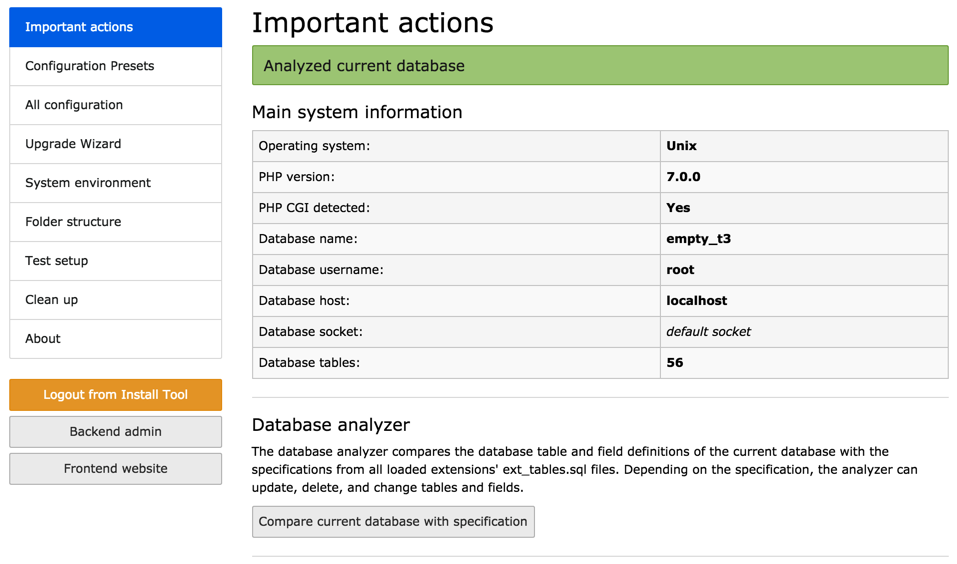Attention
TYPO3 v8 has reached its end-of-life March 31st, 2020 and is not maintained by the community anymore. Looking for a stable version? Use the version switch on the top left.
There is no further ELTS support. It is recommended that you upgrade your project and use a supported version of TYPO3.
Upgrade table/field definitions¶
When you upgrade to newer versions of TYPO3 CMS or upgrade an extension, the data definition of tables and fields might have changed. The TYPO3 CMS Install Tool will detect such changes.
When you install a new extension, any change to the database is automatically performed. When you upgrade to a new major version of TYPO3 CMS, you should normally go through the Upgrade Wizard, whose first step is to perform all necessary database changes:

When performing smaller updates, after updating extensions or - in general - if you want to check the sanity of your system, you can go to the Install Tool and use the Database analyzer, which is part of the "Important actions" menu item:

When clicking on the "Compare current database with specification" button, you will be presented with a list of updates to perform.

What this tool does is collating the information from all
ext_tables.sql files of active extensions (be they
system or public) and compare it with the current database
structure. It then proposes to perform the necessary changes,
grouped by type: creating new tables, adding new fields to existing
tables, altering existing fields, dropping unused tables and fields.
You can choose which updates you want to perform. You can even decide not to create new fields and tables, although that will very likely break your installation.
If the database matches exactly with the combined requirements of core and extensions you will see this screen:

No updates are proposed. The Flash message at the top of the screen confirms that the database has been analyzed.
The classes involved are \TYPO3\CMS\Install\Service\SqlSchemaMigrationService
and \TYPO3\CMS\Install\Service\SqlExpectedSchemaService.
More information about the process of upgrading TYPO3 CMS can be found in the Installation and Upgrade Guide.
The ext_tables.sql files¶
As mentioned before, all data definition statements are stored in
files called ext_tables.sql which may be present in any
extension.
The peculiarity is that these files may not always contain a complete and valid SQL data definition. For example, system extension "rsaauth" defines a new table for storing RSA keys:
CREATE TABLE tx_rsaauth_keys (
uid int(11) NOT NULL auto_increment,
pid int(11) DEFAULT '0' NOT NULL,
crdate int(11) DEFAULT '0' NOT NULL,
key_value text,
PRIMARY KEY (uid),
KEY crdate (crdate)
);
This is a complete and valid SQL data definition. However
system extension "css_styled_content" extends the "tt_content"
table with additional fields. It also provides these changes
in the form of a SQL CREATE TABLE statement:
CREATE TABLE tt_content (
header_position varchar(6) DEFAULT '' NOT NULL,
image_compression tinyint(3) unsigned DEFAULT '0' NOT NULL,
image_effects tinyint(3) unsigned DEFAULT '0' NOT NULL,
image_noRows tinyint(3) unsigned DEFAULT '0' NOT NULL,
section_frame int(11) unsigned DEFAULT '0' NOT NULL,
spaceAfter smallint(5) unsigned DEFAULT '0' NOT NULL,
spaceBefore smallint(5) unsigned DEFAULT '0' NOT NULL,
table_bgColor int(11) unsigned DEFAULT '0' NOT NULL,
table_border tinyint(3) unsigned DEFAULT '0' NOT NULL,
table_cellpadding tinyint(3) unsigned DEFAULT '0' NOT NULL,
table_cellspacing tinyint(3) unsigned DEFAULT '0' NOT NULL
);
The classes which take care of assembling the complete SQL data
definition will compile all the CREATE TABLE statements
for a given table and turn it into a single CREATE TABLE
statement. If the table already exists, missing fields are isolated
and ALTER TABLE statements are proposed instead.
What this means is that - as an extension developer - you should always
have only CREATE TABLE statements in your ext_tables.sql
files.
